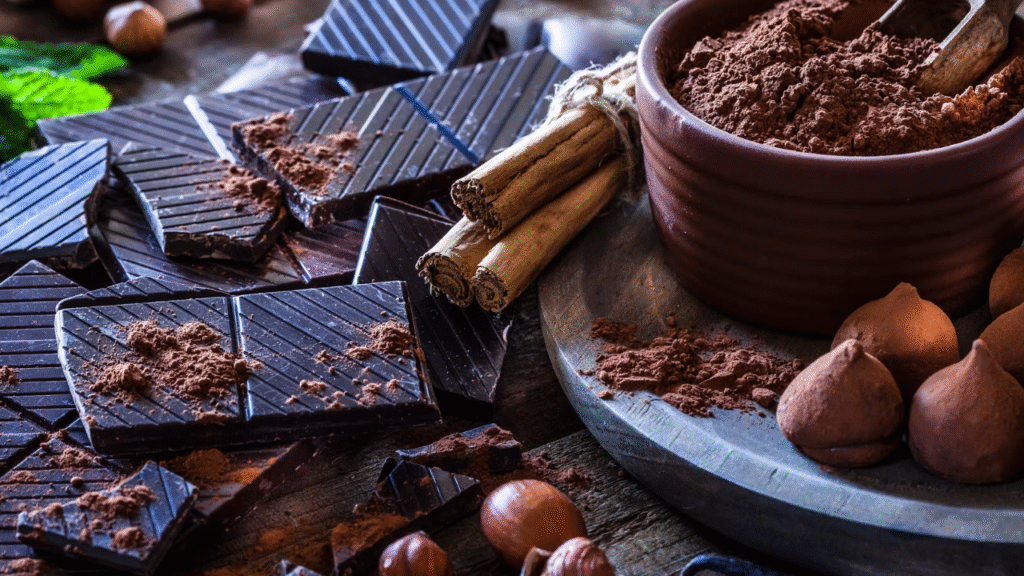For anyone passionate about chocolate—whether as a home baker, professional pastry chef, or chocolate maker—understanding cocoa liquor is essential. Often referred to as cocoa mass or cocoa paste, this rich, velvety ingredient is the very soul of chocolate. Unlike what its name might suggest, cocoa’s liquor contains no alcohol; instead, it is the purest form of chocolate in its liquid state, made solely from ground cocoa beans.
In this guide, we’ll explore:
- What cocoa liquor really is
- How it’s made from cocoa beans
- The key differences between cocoa liquor, cocoa powder, and cocoa butter
- How chefs and chocolatiers use it in recipes
- Tips for selecting and storing high-quality cocoa’s liquor
By the end, you’ll have a deep appreciation for this foundational ingredient and how it transforms into the chocolate we love.
What Is Cocoa’s Liquor?
Cocoa’s liquor is the unrefined, liquid form of chocolate obtained by grinding roasted cocoa nibs (the broken pieces of de-shelled cocoa beans). The friction and heat from grinding melt the natural cocoa butter within the nibs, creating a smooth, flowing paste.
Key Characteristics:
- Texture: Thick, viscous, and pourable when warm; solidifies at room temperature.
- Composition: Roughly 50-55% cocoa butter and 45-50% cocoa solids.
- Flavor: Deep, intense chocolate taste with varying notes (fruity, nutty, or earthy, depending on bean origin).
- No Added Ingredients: Pure cocoa’s liquor contains no sugar, milk, or additives—just cocoa.
Despite being called “liquor,” it is non-alcoholic. The term comes from its liquid state during production.
How Cocoa Liquor Is Made
Step 1: Harvesting & Fermenting Cocoa Beans
The journey begins with cocoa pods, harvested from Theobroma cacao trees. The beans are extracted, fermented for several days (developing flavor), and dried.
Step 2: Roasting the Beans
The dried beans are roasted to enhance their chocolatey depth, much like coffee beans. Roasting temperatures vary (250°F–320°F / 120°C–160°C) depending on desired flavor profiles.
Step 3: Cracking & Winnowing
The roasted beans are cracked open, and their outer shells (husks) are removed, leaving only the cocoa nibs—the edible, flavorful core.
Step 4: Grinding into Cocoa’s Liquor
The nibs are ground between heavy granite or metal rollers. The heat generated melts the cocoa butter, turning the nibs into a smooth, liquid paste: cocoa’s liquor.
Step 5: Further Processing (Optional)
- Pressed into Cocoa Powder & Butter: If separated, the liquor is pressed to extract cocoa butter, leaving behind a solid cake that becomes cocoa powder.
- Used Directly for Chocolate: For dark chocolate, cocoa’s liquor is mixed with sugar and sometimes extra cocoa butter.
Cocoa Liquor vs. Cocoa Powder vs. Cocoa Butter
| Ingredient | Description | Uses |
| Cocoa Liquor | Pure ground cocoa nibs in liquid form (cocoa solids + cocoa butter). | Chocolate bars, baking, truffles. |
| Cocoa Powder | Defatted cocoa solids (after pressing out cocoa butter). | Baking, hot chocolate, dusting desserts. |
| Cocoa Butter | The fat extracted from cocoa’s liquor. | Chocolate-making, cosmetics, moisturizers. |
Why Use Cocoa’s Liquor Over Powder or Butter?
- More Flavorful: Contains both cocoa solids and butter for a richer taste.
- Better Texture: Adds smoothness to homemade chocolate.
- No Additives: Unlike commercial chocolate, it’s 100% pure.
How Chefs & Chocolatiers Use Cocoa’s Liquor
1. Crafting Artisan Chocolate
- Dark Chocolate: Cocoa liquor + sugar + (optional) extra cocoa butter.
- Milk Chocolate: Cocoa liquor + sugar + milk powder + cocoa butter.
- White Chocolate: Cocoa butter + sugar + milk powder (no cocoa’s liquor).
2. Baking & Desserts
- Truffles & Ganache: Melted cocoa’s liquor blended with cream for luxurious fillings.
- Brownies & Cakes: Adds intense chocolate flavor without added sugar.
- Mousses & Ice Creams: Provides a deep cocoa base.
3. Savory Applications
- Mole Sauce: A touch of cocoa’s liquor enhances depth in Mexican cuisine.
- Spiced Rubs: Mixed with chili, coffee, and spices for meats.
Buying & Storing Cocoa Liquor
Choosing High-Quality Cocoa’s Liquor
- Look for Origin-Specific Brands: Single-origin cocoa’s liquor (e.g., Ecuador, Ghana) offers unique flavors.
- Check Cocoa Percentage: 100% means pure liquor; some brands blend with extra cocoa butter.
- Fair Trade & Organic Options: Ensures ethical sourcing.
Storage Tips
- Room Temperature (Cool & Dark): Stays solid; lasts up to 2 years.
- Refrigeration (Optional): Extends shelf life but may cause bloom (harmless fat separation).
- Avoid Moisture & Strong Odors: Cocoa absorbs smells easily.
FAQs About Cocoa Liquor
1. Can You Eat Cocoa’s Liquor Raw?
Yes! It’s edible but extremely bitter (like unsweetened dark chocolate). Most prefer it in recipes.
2. Is Cocoa’s Liquor Vegan?
Yes, as long as no dairy or additives are included.
3. Can I Substitute Cocoa Powder for Cocoa Liquor?
No—they behave differently. Cocoa powder lacks cocoa butter, altering texture and taste.
4. Does Cocoa Liquor Contain Caffeine?
Yes, in small amounts (similar to dark chocolate).
Final Thoughts
Cocoa liquor is the heart of real chocolate—unprocessed, versatile, and packed with deep, complex flavors. Whether you’re a home baker experimenting with homemade chocolate or a professional chef crafting gourmet desserts, mastering cocoa’s liquor opens up a world of rich, authentic chocolate experiences.


